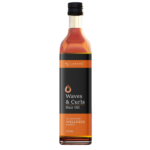Effect of Red Raisins
Nora M. Al-aboud*
Department of Biology, Umm Al-Qura University, Saudi Arabia
Received: February 02, 2018; Published: February 15, 2018
*Corresponding author: Nora M. Al-aboud, Department of Biology , Umm-Alqura university , Makkah , Saudi Arabia
Seven apparently healthy female volunteers (age range, 22 to 24 years) received 20 days of oral dried raisins, 8gm of dried raisins was given to each in the morning. The iron status of the subjects was assessed at onset of the study by assaying a venous blood sample for haemoglobin, total iron binding capacity, serum ferritin, serum transferrin, Mean corpuscular volume and serum iron. Similar tests were also performed after the discontinuation of supplementation. The results showed up mild increament in Hb levels of the subjects after taking Raisins and the increment percentage was ranging between 2% and 6.2%. The levels of TIBC were decreased for all subjects after taking Raisins in relation to pre-test levels, and the decrement percentage was ranging between 0.2% and 16.7%.
Ferritin levels for all subjects showed up mild increment after 20 days of taking Raisins in relations to the levels that have been recorded before the test and the increment percentage was ranging between 5.9% and 55.8%. Transferrin levels were decreased in blood samples of the subjects after 20 days of taking Raisins and the decrement percentage was ranging between 2.3% and 17.1%. Serum iron levels at all subjects showed up enormous increment after taking Raisins and the levels recorded were 59.2%, 96.3%, 91.7%, 81%, 94.2%, 55.2% and 82.8% respectively. MCV levels showed up mild increment at five subjects after taking Raisins and the increment percentages were 3.2%, 0,8%, 2.7%, 6.4% and 1.7% respectively.
In conclusion, we can summarize four principle strategies for correcting iron deficiency, either alone or in combination. These are education combined with dietary modification, to improve iron intake and bioavailability, iron fortification of foods and the new approach of biofortification strategies include plant breeding and genetic engineering. Finally the inclusion of raisins in a well balanced diet can contribute in promoting human health.










 Know your Dosha
Know your Dosha